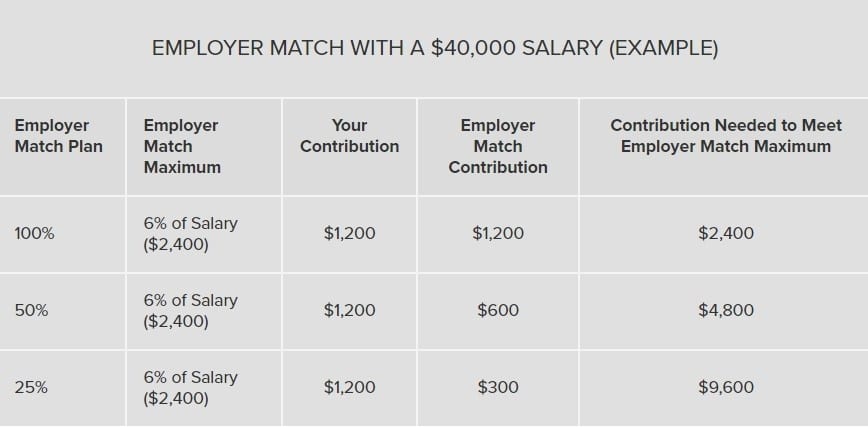This post may contain affiliate links. We may receive compensation when you click on links to those products at no additional cost to you. Read our full disclosure here.
With the advancement of technology and fintech, investing has been made easy and accessible for everyone, including those with little money and capital. According to a survey done by GoBankingRates.com, 38% of respondents would like to invest in the stock market but said they don’t make or have enough money to do so.
In this article, we’ll show you 5 easy ways to invest with little money.
Before You Start Investing…
Before you start tossing every last penny into investments, it is important to first establish a budget and an emergency fund.
An emergency fund is a bank account where you save money for a rainy day and unexpected expenses. Having an easily accessible and funded emergency fund of 3-6 months of your living expenses is important as when a financial emergency occurs, you may not be able to withdraw money from your investment accounts instantly as funds need to “settle” for up to 3 days following a sale.
Once you have a budget and an emergency fund that you’re at least comfortable in place, you can start following the ways to invest with little money below!
1. Invest in the Stock Market
The most common and direct way to invest with little money would be in the stock market. The beauty of investing now is that everyone with a mobile phone, Internet, and a Social Security number can start investing in the stock market. You can do so through brokerage apps and micro-investing apps as listed below.
If you’re interested to learn more about stocks, read more at Stocks 101: How to Invest in Stocks for Beginners!
Investing Apps
The rise of commission-free brokerages has been the theme of the 2010s. Apps like Robinhood and Webull allow users to open up accounts with no minimum and start to invest with little money, ETFs, and even cryptocurrency easily. If you have little money but want to invest in a higher-priced stock like Amazon that costs ~$3000/share, you can even buy fractional shares of stocks and ETFs.
This means that you can invest in the stock based on a dollar amount rather than the price of a whole share. Below is a list of brokerages and investing apps that you can trade for free.
- Robinhood (Receive a free stock when you open an account!)
- Webull (Receive free stock(s) when you open an account!)
- TD Ameritrade
- Ally Invest
- E*Trade
Of course, before you start investing, it is crucial to know the risks involved and do your due diligence first. There are many ways you can be invested in the stock market, including individual stocks, mutual funds, Exchange Traded Funds, and Dividend Reinvestment Plans.
Curious to learn more? Read this article about the Best Investment Apps.
Stocks
Investing in individual stocks is one of the most common ways to invest with little money. Stocks or shares are essentially the ownership of a company. When you buy a share of a company, you own a part of that company. There are a lot of risks involved in owning individual stocks outright if you’re not sure what you’re doing so be careful!
Read this to learn more about how to research and buy stocks.
Mutual Funds
A mutual fund is a type of managed investment that pools money from many investors to purchase securities (like stocks, bonds, real estate, etc.) that align with the fund’s stated investment objectives. For example, if you want to invest in the technology sector but don’t want to buy individual stocks outright, you can buy a technology mutual fund that owns different technology stocks in it.
One popular type of mutual fund is an index fund. This type of mutual fund is designed to track a market index (eg. S&P 500, Nasdaq, Dow Jones Industrial Index) and can give investors increased diversification and low operating expense. Mutual funds are not traded on the exchange and have to be purchased from the investment company.
While most mutual funds do allow you to invest with little money, some funds do have minimum requirements so be sure to consider that.
Exchange-Traded Funds (ETF)
An ETF is similar to an index fund in terms of how it tracks an underlying index or basket of securities but trades like a stock throughout the day. ETFs can track any sector of the market and there is almost an ETF for anything. For example, if you’re a big fan of coffee and want to invest in coffee, there is an ETF for it that tracks the coffee market.
Dividend Reinvestment Plans (DRIP)
When you invest in a stock, the company may perform well and reward its shareholders with cash or stock aka dividends. A DRIP is a plan whereby cash dividends are reinvested to purchase more stock in the company.
This is great for small investors to invest with little money because it allows one to purchase full or partial shares of stock while employing dollar-cost averaging as you are reinvesting the dividends consistently over an extended period.
This way, when the share value rises, your money will buy fewer shares per dollar invested. When the share price is down, your money will get you more shares.
Acorns
Another popular and trending way to invest with little money is through spare change investing via the Acorns app. This means that purchases from the linked bank account will be rounded up to the nearest dollar amount, and that difference will be moved from your checking account to the Acorns account. That money will then be invested in a diversified portfolio recommended for you depending on your profile.
For example, if you bought a cup of coffee for $3.50, Acorns will round that up to $4.00 and invest that $0.50 difference. There is a $1/month fee for the cheapest plan, but the value lies in the saving automation, as well as the diversified portfolio built out for you from the get-go.
2. Robo Advisors
If you prefer a more hands-off approach and are not too sure about how to manage your risk and reward, robo-advisors are a great option to invest with little money.
How it works is you’ll typically be asked a series of questions to identify your investment style, risk, goals, and objectives. An investment portfolio will then be created for you based on your answers. Once that’s created, the robo-advisor will manage your portfolio and perform auto-rebalancing as well as tax optimization for you.
In terms of costs, you may pay a fee based on the percentage of assets you have invested with the robo-advisor. Robo-advisors are typically cheaper than a traditional investment advisor that charges ~1% of assets managed. Below is a quick breakdown of some of the popular robo-advisors that require little to no money to start investing:
Betterment
- Annual fees: 0.25% per year.
- Minimum investment: $0
Wealthfront
- Annual fees: 0.5% per year.
- Minimum investment: $500
Sofi Automated Investing
- Annual fees: $0 per year.
- Minimum investment: $0
3. Real Estate
Want to start investing in real estate but have no idea how or have little money? Read on. There are two simple ways you can invest in real estate with little money:
Real Estate Investment Trust (REIT)
REITs are simply companies that own and manage real estate to generate income. When you purchase a REIT share, you are purchasing a share of the company that manages the real estate investments.
By law, REITs are required to distribute 90% of their taxable earnings to shareholders, thus making an attractive investment for dividends.
You can buy shares of most REITs (just like a stock) on your chosen investing platforms listed in the first point. This is important as you will be able to buy and sell your shares throughout the day easily.
Real Estate Crowdfunding
Real estate crowdfunding is similar to REITs where investors pool money together to invest in real estate.
The main difference is REITs allow investors to invest in the company that invests in real estate, whereas real estate crowdfunding allows investors to invest directly in properties, giving them more control and potentially greater returns. This gives investors more freedom and the ability to choose the property, as well as the ability to monitor real estate investments easily.
There are many real estate crowdfunding platforms available, but I’ll list some of the more notable ones that have a lower minimum investment below so you can still invest with little money.
- Annual fees: 1%
- Additional acquisition fees: 0% – 2%
- Minimum investment: $500
- Fees: 0
- Minimum investment: $500
- One-time fee: 3%
- Annual fee: 2%
- Minimum investment: $1000, or 100 shares at the NAV.
4. Employer’s Retirement Plan
For those that are working and your employer offers some sort of employer’s retirement plan (eg. 401k, 403(b), Simple IRA, 457(c), etc.) This would be the most simple and automated way to save and invest with little money.
If you are tight on budget, just start by enrolling in your employer’s sponsored retirement plan and contribute just 1% of your salary or a smaller dollar amount first. The key here is ACTION!
If your employer also offers a match, be sure to contribute at least to the match if you’re able to. For example, if you have a 401(k) plan and your employer matches 100% of up to 3% of your contribution, make sure you put in at least 3% so that you’ll get the full match from your employer. That is essentially a free 100% return on your money saved.

To learn more about the different employer retirement plans and their features, read here.
5. Fixed-income Investing
If you are a little more risk-averse and are more interested in getting a more guaranteed rate of return, you may want to invest in fixed-income securities.
Fixed income investments typically generate a stated fixed interest rate, thus the name “fixed income”. Some examples of fixed-income investments are treasury securities, government bonds, corporate bonds, and certificates of deposits.
One thing to note about fixed-income investing is how the returns (interests paid) are directly impacted by the interest rate environment. At the time this article was written (1/7/2021), interest rates are at near all-time lows, which means that the interest received from your investments will be rather low and may not be worth investing in. This fact is amplified if you invest with little money, the returns on that investment will probably not be the “sexiest”.
If you want to learn more about fixed-income investments like bonds, read this Ultimate Guide to Bonds.
6. Peer-to-Peer Lending
Peer-to-peer (P2P) lending is an alternative way to invest with little money. P2P lending platforms such as LendingClub and Prosper allow investors to lend money directly to borrowers, cutting out the traditional banking system.
Borrowers can obtain loans more accessibly, while investors can earn higher returns than traditional savings accounts.
To invest in P2P lending, investors choose the loans they want to invest in and receive monthly payments from the borrower, which include both principal and interest. The risk of default is higher than in traditional investments, so it’s important to do your due diligence and diversify your investments.
Some platforms require a minimum investment, while others have no minimum investment requirements so just be sure to do your research first.
7. Starting Your Own Business
Starting your own business can be a great way to invest with little money and potentially generate significant returns. However, it’s important to remember that starting a business can also be risky, and there’s no guarantee of success.
When starting a business with little money, you need to pick the right industry as some businesses only require smaller amounts of capital. ie. dropshipping; while some do require a big amount of capital to start, ie. the restaurant industry. Thus, it’s important to be resourceful and think outside the box.
It’s also important to develop a solid business plan and conduct thorough market research to ensure there is demand for your product or service.
Another option for starting a business with little money is to look for investors or business partners who can provide additional capital or resources. This can be a great way to share the risk and increase your chances of success.
Side Hustles
If you don’t want to jump straight into a full-fledged business, you can start by working on a side hustle first to learn the skills of how to run a business. Most side hustles only require you to invest with little money so it is a great place to start. The goal of course would be to potentially turn your side hustle into a full-time career.
Some examples of side hustles include freelance writing, graphic design, web development, tutoring, pet sitting, or selling goods on online marketplaces. Here are more ideas on different side hustles that you can do to make extra money.
8. Invest in Yourself
In all honesty, the best way to invest with little money is to invest in yourself. Don’t roll your eyes yet, just hear me out: YOU are the greatest asset to your success, which means investing in yourself should be a priority over the long-term.
Investing in yourself could be done in many ways, such as taking online courses, learning new skills, attending seminars, workshops, or conferences, or even getting a mentor. Investing in yourself could ultimately lead to an increase in your earning potential, which is a form of investment in itself.
Online courses
Online courses and programs are a great way to learn new skills, improve your knowledge, and even receive certificates of completion.
There are many websites and platforms that offer free online courses, such as Coursera, edX, and Khan Academy. These courses range from computer science, business, art and design, social sciences, health, and more.
Seminars, workshops, and conferences
Attending seminars, workshops, and conferences can be an excellent way to gain knowledge and network with like-minded individuals.
There are plenty of free and low-cost seminars, workshops, and conferences, which cover topics such as personal finance, business development, and entrepreneurship so that you can invest with little money.
Many local community colleges and universities offer free seminars or courses on various topics.
Finding a Mentor
One of the most valuable investments you can make in yourself is finding a mentor. A mentor is someone who has the experience and knowledge to guide and support you in your personal and professional growth. Having a mentor can help you avoid mistakes and accelerate your learning process.
There are many ways to find a mentor, such as attending networking events, joining professional organizations, or asking for recommendations from friends or colleagues. It’s important to find someone who shares your values and goals and has experience in the area you want to develop.
A mentor can offer you advice, feedback, and perspective that can help you improve your skills and increase your confidence. They can also introduce you to valuable connections and provide you with opportunities for growth and development.
Don’t be afraid to reach out to potential mentors and ask for their guidance. Remember, investing in yourself is the best investment you can make, and finding a mentor is a powerful way to do just that.
Summary
The next best time to start investing is now. Even if you do not have much to invest in, there are many ways you can invest with little money. Besides, make sure you continue to learn as getting educated on how to invest is equally as valuable before you start investing more money.
It is vital that you do your due diligence and understand the risks and tax implications involved before investing so that you’re prepared for the various outcomes! Make sure to consult a financial advisor if you need more advice surrounding this topic of investing with little money.
This post may contain affiliate links. We may receive compensation when you click on links to those products at no additional cost to you. Read our full disclosure here.






